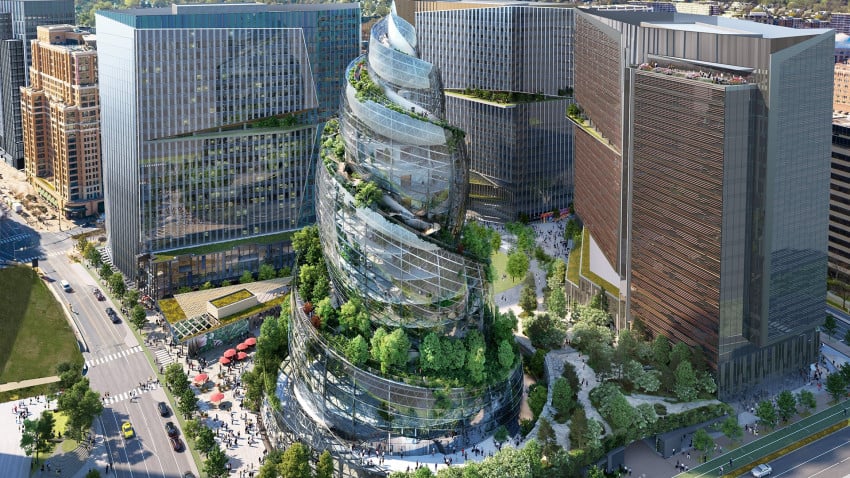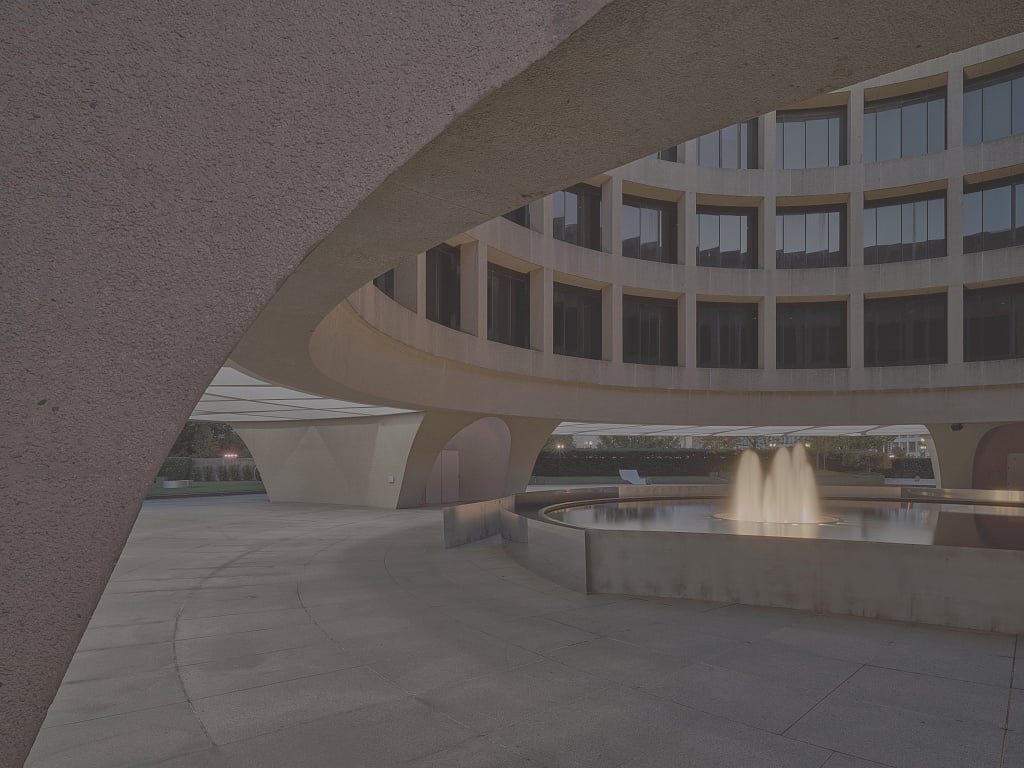The origin of Crystal City’s name is a persistent piece of Washington lore: “Crystal City — named for an elaborate crystal chandelier in a still-standing 1965 apartment building — was Washington’s prototypical suburban office center,” Eugene L. Meyer wrote in the New York Times in April 2016. “The name ‘Crystal City’ was taken from one of the early apartment buildings, the Crystal House (1900 S. Eads Street), and the large crystal chandelier that graced its lobby,” the Crystal City Civic Association writes in its history of the neighborhood. The neighborhood “is once again shining as bright as the elaborate crystal chandelier it was named after,” WeWork writes in a solicitation.
But according to Robert P. Kogod, the former co-CEO of the Charles E. Smith Companies—which developed Crystal City—the name for the neighborhood’s first building, Crystal House, came first, and the chandelier came afterward. The Smith Companies primarily used three methods to name projects, Kogod said in a presentation before the annual Building Owners and Managers Association convention in 1982. The first was to name it after where the buildings were if they had a “good address”: The Albemarle apartments on Connecticut Avenue and Albemarle Street, Northwest, for instance, or the Brandywine apartments on Connecticut Avenue and Brandywine Street, Northwest.
The second method was to name the projects after their architecture: Orleans Village featured decorative wrought iron and other touches that evoked New Orleans. Concord Village had colonial architecture.
The final method, Kogod told the convention, was “to select a name which when visually presented provides an advantageous marketing association.” After “having looked around the country to see what names and logos were being effectively used by others, we selected the name Crystal House and designed a logo with a contemporary crystal chandelier.” The logo went into all of Charles E. Smith’s marketing materials and signs, Kogod said. “And, in fact, we had the same crystal chandeliers made & installed in the lobbies of the buildings,” he said.
Kogod was just as clear on the matter when he spoke with Washingtonian reporter Luke Mullins for his story about how Arlington landed Amazon’s HQ2 for Crystal City: “In Miami Beach there’s a Crystal House apartment building complex that had crystal all over in chandelier…and we liked that. And so we said, let’s call it Crystal City, use a chandelier.”
Sadly, the chandelier in question may be lost to history. Reached by phone, a representative for Crystal House said the chandelier no longer hangs in the building. A subsequent inquiry as the current location of this important piece of Washingtoniana has not yet been resolved.




















